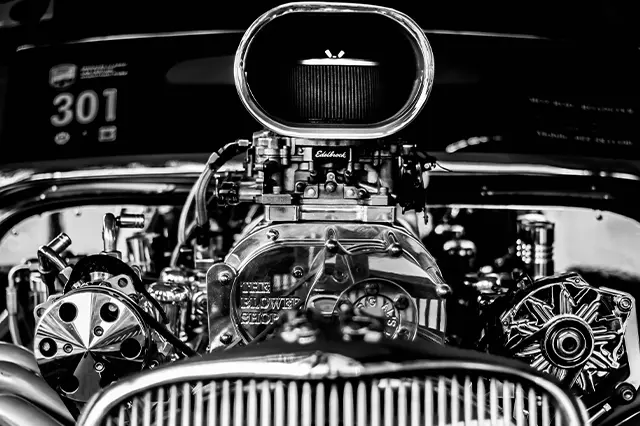
How To Replace An Upper Radiator Hose Like A Pro In Just 15 Minutes
Radiator hoses are a common problem for car owners, especially those with older vehicles. If your radiator hose is worn out or leaking, it can cause significant issues with your car’s performance and efficiency. Fortunately, replacing an upper radiator hose isn’t a particularly difficult task as long as you have the right tools and know-how. In this blog post, we’ll walk you through all the steps you need to take to replace an upper radiator hose in just 15 minutes. We’ll give you all the tips and tricks you need to make sure your replacement is fitted properly and securely so that you can drive off without worrying about it coming loose again.
What is an upper radiator hose?
An upper radiator hose is the hose that goes from the top of your radiator to your engine. It is usually made of rubber or silicone and is subject to wear and tear over time. If it leaks or bursts, it can cause your engine to overheat. That’s why it’s important to know how to replace an upper radiator hose if it needs to be replaced. Here are some tips on how to do just that:
Why do you need to replace it?
If your upper radiator hose is leaking or has a hole in it, you’ll need to replace it. A leaking radiator hose can cause your engine to overheat, so it’s important to fix the problem as soon as possible.
A radiator hose is made of rubber, so over time it can degrade and develop holes or cracks. If you notice any leaks, it’s best to replace the hose as soon as possible. It’s a relatively easy repair that you can do yourself in just a few minutes.
To replace your upper radiator hose, you’ll need a new hose, a pair of pliers, and a wrench. First, remove the old hose by disconnecting it from the radiator and engine. Then, connect the new hose to the radiator and engine and tighten the clamps with your pliers and wrench. Be sure not to overtighten the clamps, or they may break.
Once the new hose is in place, start your engine and check for leaks. If everything looks good, you’ve successfully replaced your upper radiator hose!
How often should you replace it?
It’s important to know how often to replace your upper radiator hose to keep your engine running properly. Depending on the make and model of your car, you should replace it every 30,000 to 50,000 miles. However, it’s a good idea to check it regularly for any signs of wear or tear. If you notice any cracks or leaks, it’s time to replace it.
You should also inspect your upper radiator hose during routine maintenance checks, such as oil changes and tire rotations. If you notice any signs of wear or damage, it’s always best to replace the hose as soon as possible to prevent any further damage to your engine.
What are the symptoms of a failing upper radiator hose?
Overheating is the number one symptom of a failing upper radiator hose. If your car starts to run hot, or you notice steam coming from under the hood, pull over and check your radiator hose. The hose may be split, collapsed, or otherwise damaged, and will need to be replaced. Other symptoms of a failing radiator hose include coolant leaks, unusual engine noises, and decreased engine performance.
How to replace an upper radiator hose
First, identify the upper radiator hose. It is the larger of the two hoses that connect to the top of the radiator.
Once you have found the upper radiator hose, disconnect it from the radiator by loosening the clamp that secures it in place.
Next, disconnect the other end of the hose from the engine. This will likely be secured with a spring clip, so use a pair of pliers to remove it.
Now that both ends of the hose are disconnected, you can remove it and replace it with a new one. Simply reverse the process to install the new hose. Make sure to tighten all clamps securely before starting your engine.
Tips for replacing an upper radiator hose
If your car is leaking coolant from the upper radiator hose, then it’s time to replace it. Here are some tips to help you do the job like a pro in just minutes:
1. Make sure the engine is cool before starting. This is important because you don’t want to get burned by hot coolant.
2. Disconnect the negative battery terminal to prevent electrical shorts.
3. Remove the old hose by loosening the clamp with a screwdriver and sliding it off the radiator neck and engine cooling system fitting.
4. Clean off any dirt or debris from the radiator neck and fittings with a clean rag.
5. Slide the new hose onto the fittings and tighten the clamp until it’s snug. Make sure there are no leaks and that the hose is seated properly before reconnecting the negative battery terminal and starting the engine.
6. Check the engine coolant level and top off if necessary.
7. Keep an eye on the new hose for any signs of leaks or cracks over time.
Following these steps should help you easily replace an upper radiator hose in no time.
Conclusion
Replacing an upper radiator hose may seem intimidating, but with the right tools and some patience it can be done conveniently in no time. We hope this article has been helpful to you in showing how easy it is to replace your own hose without having to take your car into a mechanic. Now that you know what needs to be done, we wish you luck on mastering the art of replacing an upper radiator hose like a pro!
